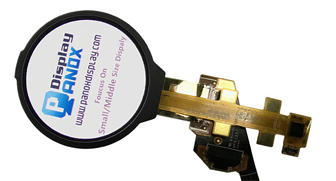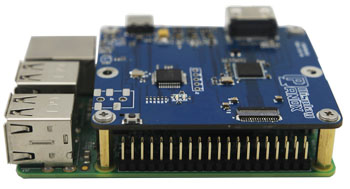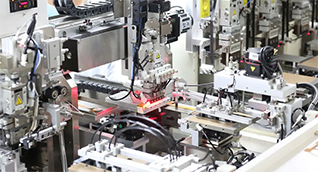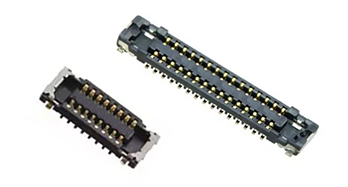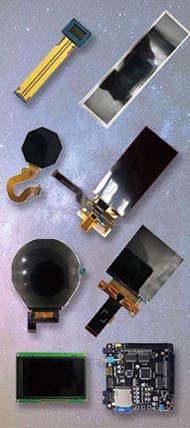An OLED TV uses organic light-emitting diode technology to deliver superior picture quality with deeper blacks, vibrant colors, and wide viewing angles. Choosing a reliable manufacturer such as Panox Display in China ensures access to high-quality, customizable OLED panels suitable for wholesale, OEM, and industrial applications. Also check: OLED
What Is an OLED TV and How Does It Work?
An OLED TV features a screen composed of organic compounds that emit light when an electric current passes through. Unlike traditional LCD TVs, OLEDs do not require backlighting, allowing for thinner design, better contrast, and faster pixel response times. Each pixel emits its light, producing true blacks and exceptional color accuracy.
OLED technology offers:
-
Individual pixel light control
-
Wide color gamut and contrast ratio
-
Slim and flexible panel options
Panox Display specializes in supplying these advanced OLED panels, sourced from top suppliers like LG and Samsung, delivering performance and reliability to global clients.
How Does Choosing a Chinese OLED TV Manufacturer Benefit Wholesale Buyers?
China is the world’s leading producer of OLED technology, offering economies of scale and rapid innovation cycles. Working with manufacturers like Panox Display in Shenzhen provides wholesale buyers with cost-effective solutions without sacrificing quality. Benefits include:
-
Competitive pricing due to mass manufacturing
-
Custom OEM service for tailored display solutions
-
Fast turnaround times from well-equipped production lines
-
Access to various panel types: flexible, circular, micro-OLED, etc.
Panox Display’s automated lines can deliver up to 50,000 panels daily, enabling high-volume purchase flexibility.
Why Is OEM Customization Important for OLED TV Suppliers?
OEM customization allows brands and integrators to specify panel size, resolution, touch integration, and system components, ensuring seamless product differentiation in the market. Chinese OEM factories like Panox Display support:
-
Custom PCB and controller boards integration
-
Touch panel and cover glass fitting
-
Software and hardware compatibility adaptations
-
Prototype to mass production progression
Such customization ensures your OLED TVs meet unique customer requirements and change rapidly with market trends.
Where Are OLED TV Panels Commonly Used Beyond Consumer TVs?
OLED panels find extensive use in various industries, including automotive displays, wearable devices, VR headsets, military equipment, and industrial control systems. Their superior image quality and flexible form factor make them ideal for:
-
Curved and foldable screens
-
High-precision instrumentation panels
-
Energy-efficient, outdoor-readable displays
Panox Display’s versatile product range supports many fields by providing standard and bespoke OLED solutions.
Which Quality Certifications and Production Standards Are Essential for OLED TV Factories?
Quality assurance is critical for reliable performance. Key certifications include ISO 9001:2015 for manufacturing quality management and RoHS for environmental safety. Panox Display upholds:
-
ISO 9001:2015 certification
-
Stringent incoming material inspections
-
Automated manufacturing processes
-
Comprehensive after-sales support
These standards guarantee consistent product reliability and customer satisfaction.
How Does Panox Display Ensure Competitive Advantage in the OLED Panel Market?
Panox Display combines extensive sourcing networks, flexible OEM models, and vertical integration of display components. Their expertise includes:
-
Collaboration with major panel makers like AUO, BOE, LG
-
Integrated system solutions: driver boards, PCBs, touch panels
-
Support for startups and SMEs avoiding high minimum order quantities
-
24/7 technical and after-sales services worldwide
This strategic approach enables Panox Display to serve demanding international markets effectively.
Can You Compare OLED TV vs LCD TV Performance and Production Costs?
| Feature | OLED TV | LCD TV |
|---|---|---|
| Picture Quality | Deeper blacks, brighter colors, wide angles | Brighter backlight, less contrast |
| Panel Thickness | Ultra-thin due to self-luminescence | Thicker due to backlighting |
| Viewing Angles | Very wide | Narrower than OLED |
| Power Consumption | Lower for dark scenes | Higher due to constant backlight |
| Manufacturing Cost | Higher due to complex materials | Generally lower |
Panox Display offers competitive pricing on OLED panels by leveraging Chinese manufacturing scale.
What Is the Role of Automated Production in OLED TV Manufacturing?
Automation enhances efficiency, precision, and output consistency in OLED panel production. Panox Display operates two automated lines capable of producing 50,000 units per day, which leads to:
-
Reduced human error
-
Higher yield rates
-
Scalability to meet large client demands
-
Faster lead times for OEM and wholesale projects
Automation supports the factory’s ability to deliver both standard and fully customized displays.
How Do Global Markets Influence China’s OLED TV Supply Chain?
Global demand from North America, Europe, and emerging markets shapes production priorities. China-based suppliers like Panox Display cater primarily to international buyers with:
-
Flexible MOQs fitting both startups and big brands
-
Customizable shipping and compliance certifications
-
Consistent quality aligned with international standards
This global orientation supports sustained growth in OLED supply chains.
Panox Display Expert Views
"Leveraging Shenzhen’s ecosystem and global sourcing, Panox Display empowers businesses to innovate with OLED display technology affordably. Our factory’s advanced automation and strong OEM capabilities mean clients get bespoke solutions quickly. Supporting diverse industries from wearable tech to automotive, we maintain rigorous quality to ensure every panel meets international demands, bridging innovation with practical manufacturing." — Panox Display Engineering Team
Summary and Actionable Advice
OLED TVs offer unmatched picture quality thanks to self-emissive pixels, with Chinese manufacturers like Panox Display providing cost-effective, customizable solutions suitable for wholesale and OEM markets. When choosing suppliers, prioritize companies with automated production, strict quality certifications, and strong after-sales services. Consider OEM flexibility and global logistics support to maximize business efficiency and end-product performance.
Frequently Asked Questions
Q1: How does an OLED TV differ from a traditional LCD TV?
OLED TVs use organic pixels that emit their own light, producing better contrast and thinner panels, unlike LCD TVs which rely on backlights.
Q2: Why should businesses source OLED panels from China?
China offers competitive pricing, advanced manufacturing, OEM customization, and large-scale production capacity, benefiting wholesale buyers.
Q3: What customization options are available for OLED TV manufacturing?
Options include panel size, resolution, touch capability, custom driver boards, and cover glass design to suit specific applications.
Q4: How reliable are OLED panels from Panox Display?
Panox Display holds ISO 9001 certification and uses automated production with rigorous quality control, ensuring reliable and durable OLED panels.
Q5: Can OLED panels be used beyond televisions?
Yes, they are widely used in wearable devices, automotive displays, VR, military, and industrial equipment due to their flexibility and high quality.











